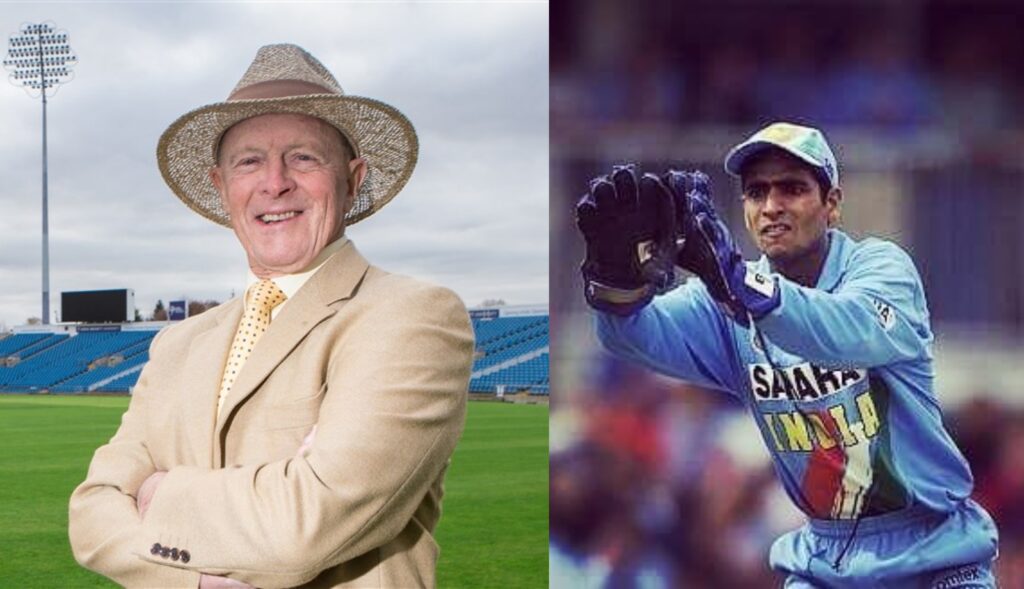Sir Geoffrey Boycott is easily one of the best test batsmen the cricketing world has seen. He played over 100 test matches for England and scored as many as 22 hundreds with an average close to 50. And this came at a time when batting was much tougher in the longest format of the game.
Geoffrey Boycott retired from international cricket in 1982 but that didn’t end his fame. As a commentator, in the coming years, he gained supreme popularity for his no-holds-barred and bold views behind the microphone. This resulted in him gaining fans from people who were born even after he stopped playing cricket, including me.
As per his true nature, Geoffrey Boycott had the habit of rubbishing off any player he didn’t like or felt wasn’t worthy enough to play international cricket. One such cricketer who became his target was India’s 20-year-old wicket-keeper batsman Ajay Ratra in the fourth test against the West Indies at Antigua during the 2002 tour.
It was Ratra’s debut series and he wasn’t able to show any magic from his bat before that match. Deep Dasgupta played the role of the wicket-keeper in the first test. But he was replaced by Ratra from the second test onwards in the five match series. In his first two tests [2nd and 3rd test of the series], he had scores of under 20 with one 0.
But Ratra was still included in the playing 11 in the fourth test. He came into bat in the first innings when India were 257 for 6. As soon as he faced a few balls and wasn’t able to play them with confidence, Geoffrey Boycott started criticizing him with his famous line being, “I don’t think he can bat.”
This started a fun banter in the commentary box between him and Ravi Shastri, who subtly took Ratra’s side. When Shastri said he is a good batsman, Boycott came up with a vow saying that he will chew his hat if Ratra scores a hundred.
I didn’t think much of that at that time because I could see Ratra was struggling and I didn’t have much hopes from him. But somehow, he stood his ground and started playing with some confidence. After a while, he even reached his fifty. Now, I did start thinking about Boycott’s vow. The also led to some fun in the commentary box.
Ratra finished the day on 92 not out.
In an interview with former cricketer and YouTuber Padamjeet Sehrawat in 2020, Ratra said that he wasn’t aware at all about what transpired in the commentators’ box that day. After the day’s play, Shastri told Ratra to please score the remaining 8 runs and that it would be great fun in the commentary box if he did so.
The next day, after some anxiety-driven moments when he was on 99, Ratra finally reached the three-figure mark through a boundary down to the fine leg area. He was, obviously, overjoyed and so was Shastri. He then came up with his remark that I still remember, “The man who can’t bat is batting on 100.”
Ratra’s century had an even more importance. He became the first Indian specialized wicket-keeper to score a test century overseas. The yesteryear icon Vijay Manjrekar did score a 100 against West Indies in West Indies in 1953 while keeping wickets, but he wasn’t a specialized wicket-keeper.
There were more records broken in the match. It was the first test match ever where wicket-keepers from both the teams scored centuries after WI’s Ridley Jacobs also scored one. Other than these records, the match was a boring draw.
Coming back to Ratra’s century, Geoffrey Boycott had to keep his word. I remember he showed some great sportsmanship and did chew his hat once after the day’s play while criticizing the West Indian bowlers. Shastri made the occasion livelier by bringing a glass of wine.
Of course, it was all in good humour.
P.S: I was reminded of this incident at the end of last year while watching Kabir Khan’s 83. The film highlighted an incident where an English journalist had to literally eat his own words after team India proved him wrong by winning the 1983 World Cup.
Also read:

I knew this was triggered by 83!